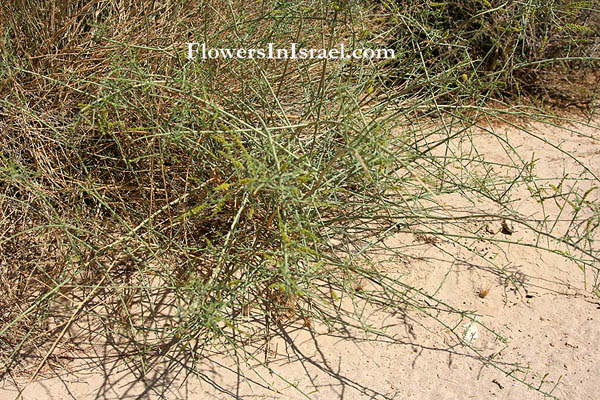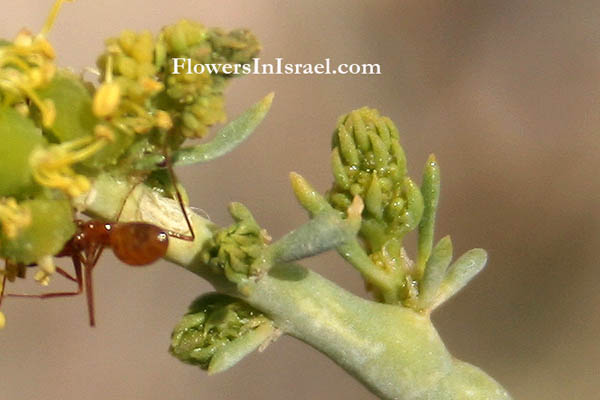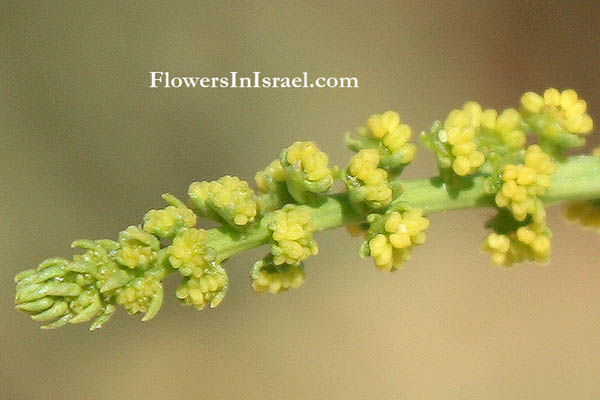Hebrew: רכפתן מדברי Arabic: العلندر
| Scientific name: | Ochradenus baccatus Delile | |
| Common name: | Taily Weed | |
| Hebrew name: | רכפתן מדברי | |
| Arabic name: | العلندر | |
| Family: | Resedaceae, רכפתיים |

|
| Life form: | Phanerophyte shrub | |
| Stems: | Branches slender, greenish yellow when mature. | |
| Leaves: | Alternate, entire, linear, acute | |
| Inflorescence: | In dense terminal and rigid racemes 5-15 cm long; bract c. 2.5 mm long, oblong;pedicel 1 mm long, slightly longer in fruit | |
| Flowers: | Yellowish green, bisexual flowers; sepals 5(-6), ovate, 1 mm long; petals absent or 2-3, less than 1 mm long, subulate; appendage more or less suborbiculate; disc fleshy, surrounding the filaments and ovary; stamens 10-12; filaments 1-2 mm long, fused at the base, deciduous; female flowers: Petals absent or reduced. Ovary glabrous; staminodes present | |
| Fruits / pods: | Berry 3-5 mm broad, white. rugose seeds c. 1.5 mm long, reniform, brown, papillose; fruit is sweet and edible | |
| Flowering Period: | January, February, March, April, May, December | |
| Habitat: | Thermophilous plants | |
| Distribution: | Mediterranean Woodlands and Shrublands, Semi-steppe shrublands, Shrub-steppes, Deserts and extreme deserts | |
| Chorotype: | Sudanian-African | |
| Summer shedding: | Perennating |

Derivation of the botanical name: Ochradenus, ochros ωχροϛ , pale yellow, yellow ochre; aden, gland. baccatus, bacca, berry; adorned with berries. The Hebrew name: רכפתן, rikhptan, derivated from רכפה, rikhpa, a plant used for dyeing, probably identical with the weld, or mignonette.


|